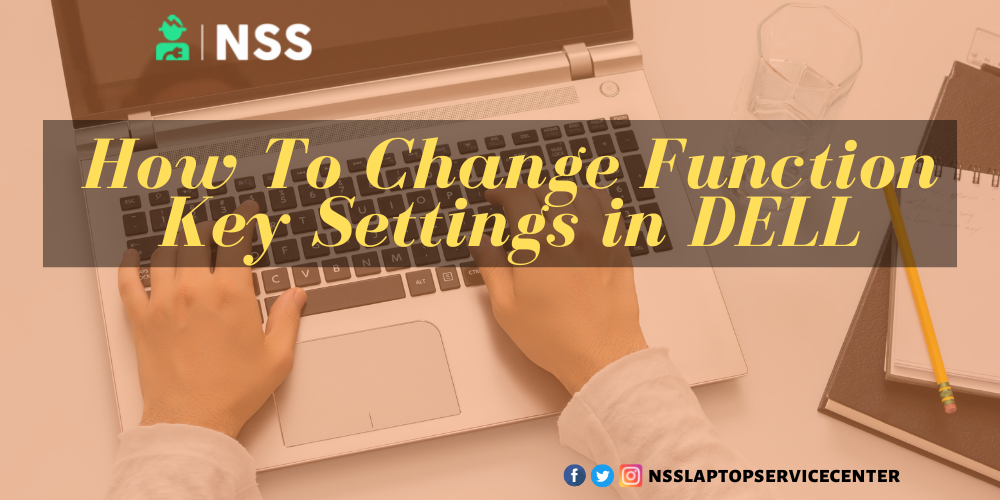
On a Dell, pressing the "Fn" key will turn the multimedia keys on and off. The multimedia keys on some models must be activated by pressing "Fn." Still, on the Dell PC, the keyboard action can be modified so that the multimedia keys are always active. However, this setting can get in the way of your job since Dell might overrule certain keyboard functionalities that some enterprise software assign to specific keys if those are multimedia keys. The multimedia keys on the Dell can only be activated by pressing "Fn," according to settings that can be changed.
1. Restart or turn on the computer. To access the BIOS options, press "F2" when you see the Dell logo.
2. Use the arrow keys to select the "Advanced" tab. To find "Function Key Behavior," scroll down.
3. Press "+" or "-" to change the setting to "Function Key First." Select the "Exit" tab.
4. To fix the Dell function key and restart the computer, choose "Exit Saving Changes" and press "Enter."
The Fn key, which stands for "function," is a modifier key that is commonly found on keyboards, particularly those found on laptops. It is used in a small layout to combine keys that are typically kept apart. Due to their limited keyboard size, laptops are usually where you can find them. It serves as the F-Lock key on many full-sized "multimedia" keyboards. It is used to swiftly modify display or audio settings, such as brightness, contrast, or volume, and is held down while pressing the relevant key to adjust.
The location of the Fn key is not yet standardized. However, most manufacturers have placed it next to a left Control key that has been shrunk and moved. Changes to the Control key's size and location are frequently seen as inconvenient by users accustomed to the more giant left Control key on IBM PC-style keyboards, commonly used for desktop computers. This is because the Control key is most commonly associated with OS and application shortcuts (such as Control+S to save a document or Control+Shift+Escape to launch the Task Manager in modern versions of Microsoft Windows)
The Fn key is currently positioned between the left Control key and the left Windows key on the bottom row of the keyboard by most portable computer makers today (including HP, Dell, and Samsung). This typically results in the Control key becoming smaller while still allowing it to occupy the bottom-left position on the keyboard.
The Fn key is now in the lowest left position on Lenovo's ThinkPad keyboards, placing Control in the second-from-left position on the bottom row. The present ThinkPad product line was created by IBM in 1992, but this arrangement has been in place since then and is currently exclusive to ThinkPads among all laptops that ship with Windows. This layout was chosen, at least in part, by IBM's designers so that the laptop's ThinkLight could be turned on in the dark by merely feeling for the keys in two corners of the keyboard.
Notably, ThinkPads didn't start shipping keyboards with Windows keys until 2006, so even though the Fn key replaced the left Control key, neither it nor the left Alt key needed to be shrunk. ThinkPad keyboards typically have larger left Control keys than many other manufacturers and are unique in that they maintain the Control, Windows, and Alt keys on laptops starting in mid-2006. This was done primarily by reducing the left Alt key.
Also Read: Dell Service Center Thane West & East Maharashtra
Also Read: Dell laptop repairing service center in Jaipur Rajasthan
Conclusion:
I won't say much, as the blog has informed you how to open a DVD drive on a laptop. It is an easy process, and you can use it for various purposes.
Frequently Asked Questions
Popular Services
- MacBook Battery Replacement Cost
- HP Printer Repair in Delhi NCR
- Dell Laptop Repair
- HP Laptop Repair
- Samsung Laptop Repair
- Lenovo Laptop Repair
- MacBook Repair
- Acer Laptop Repair
- Sony Vaio Laptop Repair
- Microsoft Surface Repair
- Asus Laptop Repair
- MSI Laptop Repair
- Fujitsu Laptop Repair
- Toshiba Laptop Repair
- HP Printer Repair Pune
- Microsoft Surface Battery Replacement
- Microsoft Surface Screen Replacement




